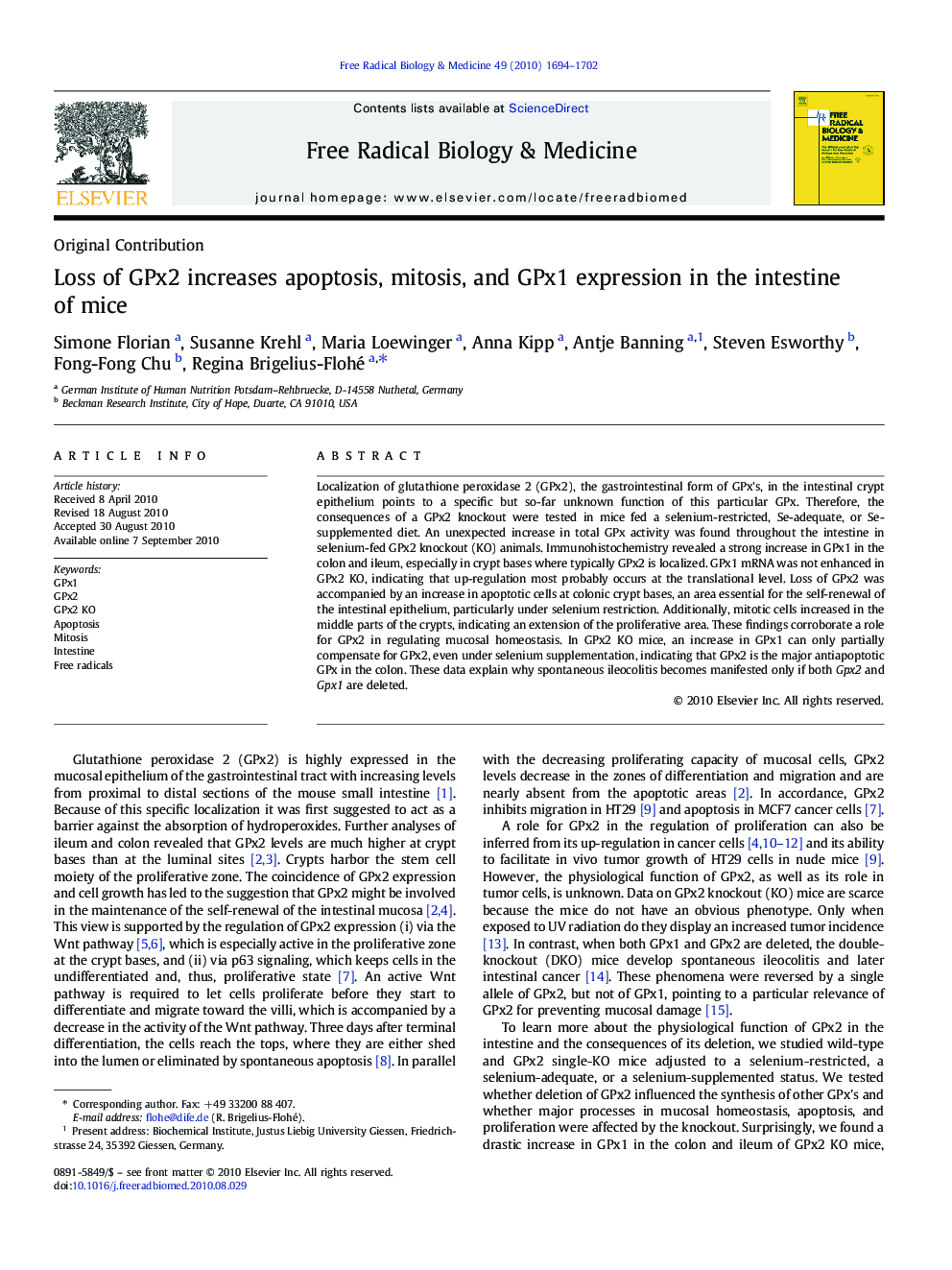| Article ID | Journal | Published Year | Pages | File Type |
|---|---|---|---|---|
| 1909466 | Free Radical Biology and Medicine | 2010 | 9 Pages |
Localization of glutathione peroxidase 2 (GPx2), the gastrointestinal form of GPx's, in the intestinal crypt epithelium points to a specific but so-far unknown function of this particular GPx. Therefore, the consequences of a GPx2 knockout were tested in mice fed a selenium-restricted, Se-adequate, or Se-supplemented diet. An unexpected increase in total GPx activity was found throughout the intestine in selenium-fed GPx2 knockout (KO) animals. Immunohistochemistry revealed a strong increase in GPx1 in the colon and ileum, especially in crypt bases where typically GPx2 is localized. GPx1 mRNA was not enhanced in GPx2 KO, indicating that up-regulation most probably occurs at the translational level. Loss of GPx2 was accompanied by an increase in apoptotic cells at colonic crypt bases, an area essential for the self-renewal of the intestinal epithelium, particularly under selenium restriction. Additionally, mitotic cells increased in the middle parts of the crypts, indicating an extension of the proliferative area. These findings corroborate a role for GPx2 in regulating mucosal homeostasis. In GPx2 KO mice, an increase in GPx1 can only partially compensate for GPx2, even under selenium supplementation, indicating that GPx2 is the major antiapoptotic GPx in the colon. These data explain why spontaneous ileocolitis becomes manifested only if both Gpx2 and Gpx1 are deleted.
